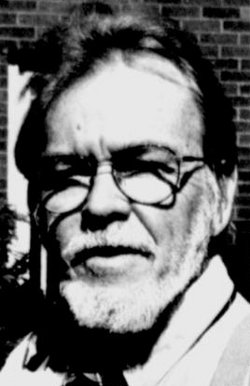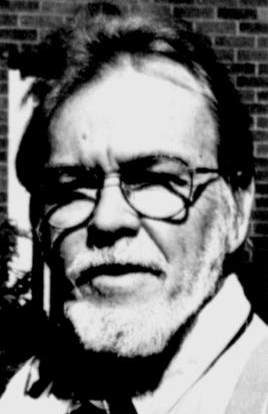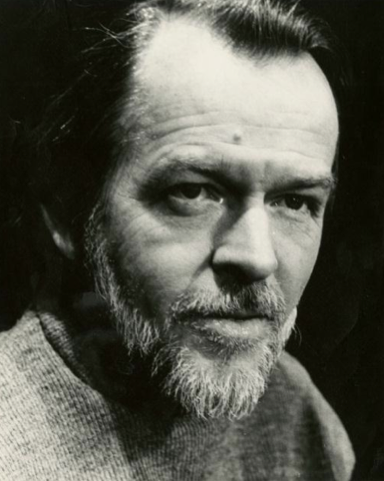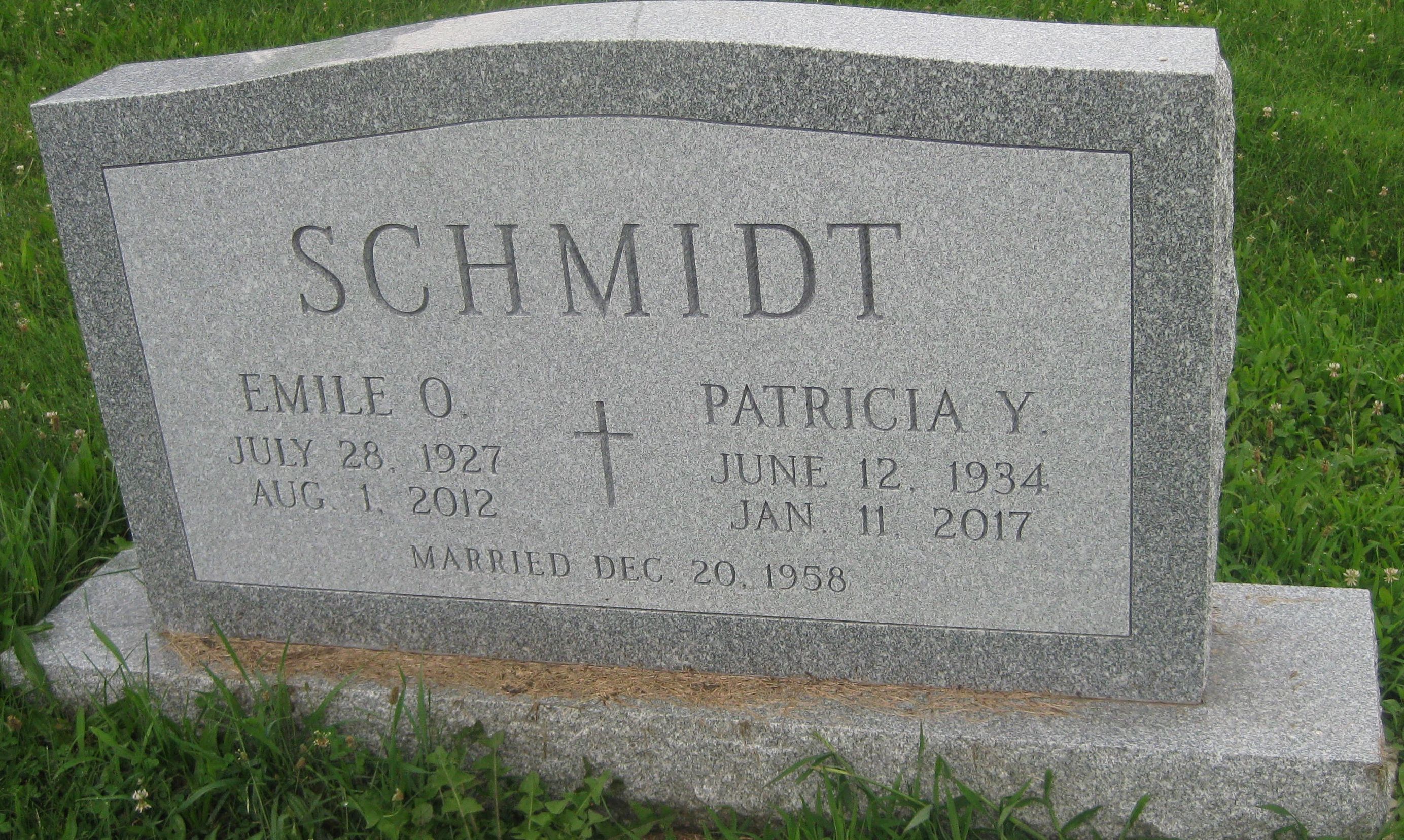One tends to think of Danish people as low key, and if this cliche is true, Professor Schmidt was an Italian trapped in a Dane's body. A delightful, smart and true gentleman, his dynamic self was stuffed into a small body five foot five tall that featured blazing blue eyes and a recalcitrant lock of hair that flipped continually onto his forehead. There was an eccentricity and a fierceness to him, a ready wit, and a voice with range rivaling Richard Burton's that seemed at times to come from deep within. Sometimes surprising and light, his voice could be almost a gritty growl at its deepest, with impeccable diction, never giving a clue where he was raised. He fairly crackled with vitality.
There are thousands of us who had the great good fortune to have studied theatre with Professor Schmidt, and the luck lay in being paired with a man whose excellent knowledge of literature and theatre was matched only by his ability to encourage and nurture. One of his former students, a funny and talented young actress who then went by Mary Liz Schofer said of him "His infectious enthusiasm and warmth were legendary, and he created real theatre families at Gettysburg... Emile never thought we were dumb suburban kids. He opened our minds to the best theatre literature of our times, and mounted always challenging, thoughtful works... He took personal interest in all of us theatre majors, and opened his heart to us. He was a little guy with a great bow. I hope there's a place somewhere for him in the pantheon."
Ah, yes, the bow... that smiling bow of many an opening night, when his upturned eyes and tight grin would disappear as he bowed low, jack-knifing himself, that forelock flipping onto his forehead once more as he rose, the glint of triumph in his eyes.
Professor Schmidt did it all within a college that did not devote endless funds or huge staff to a theatre department at the time... He knew and taught lighting, set design and building, theatre history, acting and directing, costumes and makeup with equal knowledge and spirit. His personal acting is preserved in the film "Gettysburg" where he was featured as General John Gibbon.
My biggest personal debt to Professor Schmidt was incurred when he permitted me, a mere freshman, to direct a show, and I am forever grateful for his faith. Sartre's "No Exit" about three people trapped together in hell was my choice, and somehow, with six other student directors wrangling over a limited acting pool, I was allowed to have actors of the highest caliber: the young lady mentioned above, Mary Liz Schofer, sizzled as the manipulative Inès, Tim Hamm raged as Garcin, and Carol Suggs flirted and wept as Estelle. No student director could have asked for and gotten more support in terms of casting. Further, the Lab Theatre was an intimate "in the round" space, and much of the play revolved around the locked door that kept the three people in hell, so... where do you put a door in a space with no walls? Ah yes, in the floor, and Professor Schmidt accepted the idea with a wry grin, completely comfortable with my abandonment of the traditional idea of hell being "down".
Professor Schmidt brought new plays as well as classics to the stage at Gettysburg, and took pains to breathe fresh air into the program through unusual works and artists in residence. Many students of my time will remember one such artist who (despite his many excellent gifts and techniques) turned out to be a temperamental and mean-spirited man who was so lacking in human skills while directing, that he actually made some students cry. After a more than fair trial, the visiting artist was summarily dispatched, Dr. Schmidt took charge at the 11th hour, and we had a fine production of the extraordinarily complex and challenging "Rimers of Eldritch". That was a bow to remember.
When you think of Professor Schmidt, you think of him in motion. People versed in sales will tell you that you can read a lot about people by they way they stand. It's believed that people who stand "square" with both feet flat on the ground are "tougher sells" and firmer in mindset than people who place weight on one foot or another, or who have one foot turned or tucked, or a hand on a hip. If there is truth to this body language, Emile Schmidt was the exception. He never stood squarely. My visual memory is peppered with him slowly rocking between his two feet, one planted in front of the other in a semi-lunge, set to propel him forward or back... or of him with one cowboy-booted foot on a riser and the other on the floor, or of him standing like Michaelangelo's "David" with a hip thrust forward and an "S" curve to his body. But off balance? Weak? No. Simply ready to move again since he never really stopped.
_____________________________________
In the early morning hours of August 1, 2012, Emile O. Schmidt died surrounded by his family, three days after celebrating his 85th birthday. Emile was born and raised in the Bronx, New York, as a first-generation Danish American.
Emile's love of the theatre began when he saw his first Broadway play as a child. As a young man, he worked in the professional theatre with some of the major stars of the day. After serving in the US Navy, he attended Ursinus College and went on to receive his master's degree from Columbia University. Emile met his beloved wife Patricia Martell while a professor at Springfield College. He spent the majority of his 50-year tenure as a professor of theatre at Gettysburg College, where he founded the theatre arts department. The College honored him as Professor of the Year, established the ongoing "Emile O. Schmidt Award" for theatre students, and named the tower in Brua Hall in his honor.
Together with his wife Patricia, they brought hundreds of plays to the Gettysburg community over 20 years of summer theatre. Emile designed the Kline Theatre in Brua Hall, which now serves as home to the Gettysburg Theatre Department. His legacy as director, teacher, and mentor will long be felt by the thousands of students whose lives he touched in the classroom and on the stage.
Emile is survived by Patricia, his wife of 53 years, his children Kristine Pegno, Jenni Shomaker, Matthew Schmidt, their spouses Matt Shomaker and Dina Schmidt, and six grandchildren, Joshua, Jeffrey, Brian, Misha, Erik, and Rebecca. He is also survived by his sister Barbara Norman and numerous nieces and nephews.
The funeral was held on Sunday, August 5, 2012, at 2:00 pm, at St. John's Episcopal Church, on the Square, Carlisle, with a visitation at Hoffman-Roth Funeral Home, 219 North Hanover Street, Carlisle on Saturday, August 4, from 6 - 8 pm. In lieu of flowers, donations may be made to the Theatre Arts Special Gifts Fund at Gettysburg College, Campus Box 423, Gettysburg, PA 17325.
One tends to think of Danish people as low key, and if this cliche is true, Professor Schmidt was an Italian trapped in a Dane's body. A delightful, smart and true gentleman, his dynamic self was stuffed into a small body five foot five tall that featured blazing blue eyes and a recalcitrant lock of hair that flipped continually onto his forehead. There was an eccentricity and a fierceness to him, a ready wit, and a voice with range rivaling Richard Burton's that seemed at times to come from deep within. Sometimes surprising and light, his voice could be almost a gritty growl at its deepest, with impeccable diction, never giving a clue where he was raised. He fairly crackled with vitality.
There are thousands of us who had the great good fortune to have studied theatre with Professor Schmidt, and the luck lay in being paired with a man whose excellent knowledge of literature and theatre was matched only by his ability to encourage and nurture. One of his former students, a funny and talented young actress who then went by Mary Liz Schofer said of him "His infectious enthusiasm and warmth were legendary, and he created real theatre families at Gettysburg... Emile never thought we were dumb suburban kids. He opened our minds to the best theatre literature of our times, and mounted always challenging, thoughtful works... He took personal interest in all of us theatre majors, and opened his heart to us. He was a little guy with a great bow. I hope there's a place somewhere for him in the pantheon."
Ah, yes, the bow... that smiling bow of many an opening night, when his upturned eyes and tight grin would disappear as he bowed low, jack-knifing himself, that forelock flipping onto his forehead once more as he rose, the glint of triumph in his eyes.
Professor Schmidt did it all within a college that did not devote endless funds or huge staff to a theatre department at the time... He knew and taught lighting, set design and building, theatre history, acting and directing, costumes and makeup with equal knowledge and spirit. His personal acting is preserved in the film "Gettysburg" where he was featured as General John Gibbon.
My biggest personal debt to Professor Schmidt was incurred when he permitted me, a mere freshman, to direct a show, and I am forever grateful for his faith. Sartre's "No Exit" about three people trapped together in hell was my choice, and somehow, with six other student directors wrangling over a limited acting pool, I was allowed to have actors of the highest caliber: the young lady mentioned above, Mary Liz Schofer, sizzled as the manipulative Inès, Tim Hamm raged as Garcin, and Carol Suggs flirted and wept as Estelle. No student director could have asked for and gotten more support in terms of casting. Further, the Lab Theatre was an intimate "in the round" space, and much of the play revolved around the locked door that kept the three people in hell, so... where do you put a door in a space with no walls? Ah yes, in the floor, and Professor Schmidt accepted the idea with a wry grin, completely comfortable with my abandonment of the traditional idea of hell being "down".
Professor Schmidt brought new plays as well as classics to the stage at Gettysburg, and took pains to breathe fresh air into the program through unusual works and artists in residence. Many students of my time will remember one such artist who (despite his many excellent gifts and techniques) turned out to be a temperamental and mean-spirited man who was so lacking in human skills while directing, that he actually made some students cry. After a more than fair trial, the visiting artist was summarily dispatched, Dr. Schmidt took charge at the 11th hour, and we had a fine production of the extraordinarily complex and challenging "Rimers of Eldritch". That was a bow to remember.
When you think of Professor Schmidt, you think of him in motion. People versed in sales will tell you that you can read a lot about people by they way they stand. It's believed that people who stand "square" with both feet flat on the ground are "tougher sells" and firmer in mindset than people who place weight on one foot or another, or who have one foot turned or tucked, or a hand on a hip. If there is truth to this body language, Emile Schmidt was the exception. He never stood squarely. My visual memory is peppered with him slowly rocking between his two feet, one planted in front of the other in a semi-lunge, set to propel him forward or back... or of him with one cowboy-booted foot on a riser and the other on the floor, or of him standing like Michaelangelo's "David" with a hip thrust forward and an "S" curve to his body. But off balance? Weak? No. Simply ready to move again since he never really stopped.
_____________________________________
In the early morning hours of August 1, 2012, Emile O. Schmidt died surrounded by his family, three days after celebrating his 85th birthday. Emile was born and raised in the Bronx, New York, as a first-generation Danish American.
Emile's love of the theatre began when he saw his first Broadway play as a child. As a young man, he worked in the professional theatre with some of the major stars of the day. After serving in the US Navy, he attended Ursinus College and went on to receive his master's degree from Columbia University. Emile met his beloved wife Patricia Martell while a professor at Springfield College. He spent the majority of his 50-year tenure as a professor of theatre at Gettysburg College, where he founded the theatre arts department. The College honored him as Professor of the Year, established the ongoing "Emile O. Schmidt Award" for theatre students, and named the tower in Brua Hall in his honor.
Together with his wife Patricia, they brought hundreds of plays to the Gettysburg community over 20 years of summer theatre. Emile designed the Kline Theatre in Brua Hall, which now serves as home to the Gettysburg Theatre Department. His legacy as director, teacher, and mentor will long be felt by the thousands of students whose lives he touched in the classroom and on the stage.
Emile is survived by Patricia, his wife of 53 years, his children Kristine Pegno, Jenni Shomaker, Matthew Schmidt, their spouses Matt Shomaker and Dina Schmidt, and six grandchildren, Joshua, Jeffrey, Brian, Misha, Erik, and Rebecca. He is also survived by his sister Barbara Norman and numerous nieces and nephews.
The funeral was held on Sunday, August 5, 2012, at 2:00 pm, at St. John's Episcopal Church, on the Square, Carlisle, with a visitation at Hoffman-Roth Funeral Home, 219 North Hanover Street, Carlisle on Saturday, August 4, from 6 - 8 pm. In lieu of flowers, donations may be made to the Theatre Arts Special Gifts Fund at Gettysburg College, Campus Box 423, Gettysburg, PA 17325.
Family Members
Sponsored by Ancestry
Advertisement
Explore more
Sponsored by Ancestry
Advertisement









